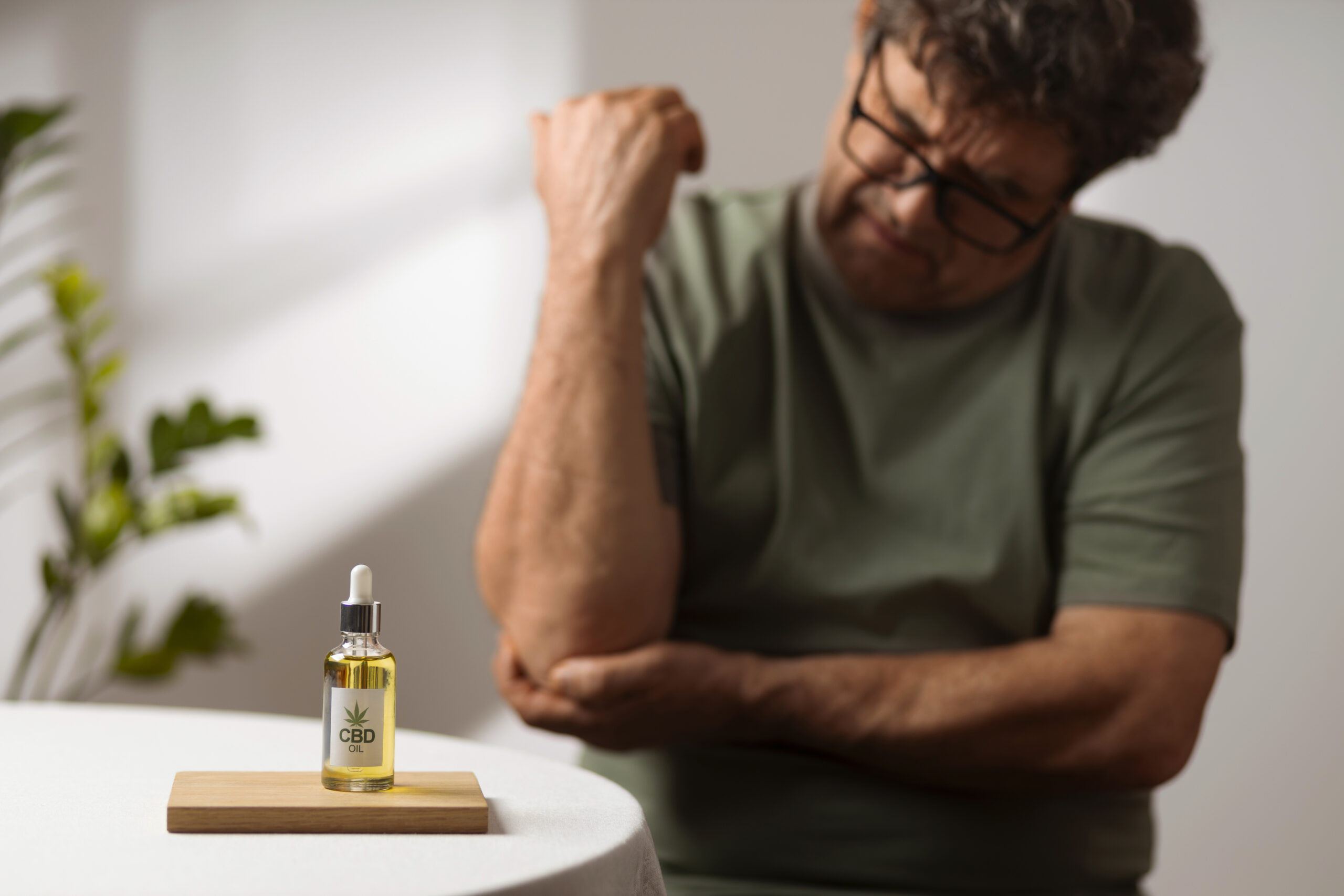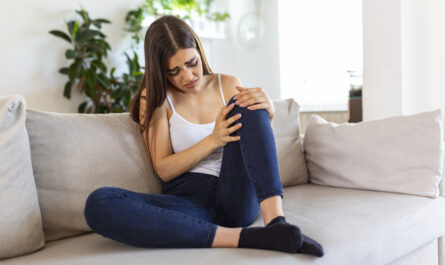Muscle cramps can strike anyone at any time, often without warning. These sudden, painful contractions can occur during exercise, while sleeping, or simply when stretching in an awkward way. Although they may only last a few seconds or minutes, muscle cramps can be intense and debilitating, making the need for immediate relief crucial. This guide provides you with quick tips and effective strategies to help stop muscle cramps right when they start, as well as methods to prevent them in the future.
Understanding Muscle Cramps: Causes and Symptoms
A muscle cramp is an involuntary contraction that tightens the muscle, causing sudden and intense pain. The most commonly affected muscles are those in the legs—particularly the calves, hamstrings, and quadriceps—but cramps can also occur in the feet, hands, and other areas. To effectively address muscle cramps, it’s essential to understand the primary causes and symptoms that accompany them.
Common Causes of Muscle Cramps
Muscle cramps may be triggered by various factors, including:
- Dehydration: When the body lacks sufficient fluids, it can lead to an imbalance in electrolytes, essential for muscle function. This imbalance often contributes to muscle cramps.
- Electrolyte Imbalance: Electrolytes, like potassium, sodium, calcium, and magnesium, play a vital role in muscle contraction and relaxation. Low levels of these minerals can increase the risk of cramping.
- Overuse and Fatigue: Extended periods of exercise or strenuous physical activity can lead to muscle fatigue, which can trigger cramps.
- Poor Circulation: Reduced blood flow to muscles, often due to a sedentary lifestyle or certain health conditions, may cause cramping, particularly during periods of inactivity or sleep.
- Inadequate Stretching: Muscles that aren’t properly warmed up or stretched before physical activity are more likely to cramp.
Symptoms of Muscle Cramps
Symptoms of muscle cramps are usually straightforward but can vary in intensity. These include:
- Sudden, sharp pain in the muscle
- A hard, visible knot in the muscle
- Temporary inability to use the affected muscle
- Tightness or stiffness of the muscle
Quick Tips for Stopping Muscle Cramps Immediately
When a muscle cramp strikes, there are several effective ways to relieve the pain quickly and restore function to the affected area. These methods can be applied almost anywhere, whether you’re at the gym, at work, or even in bed.
1. Stretch the Affected Muscle
One of the fastest ways to alleviate muscle cramp pain is by gently stretching the affected muscle. Stretching helps interrupt the cramping cycle by elongating the muscle fibers and easing the contraction. Here’s how to stretch specific muscles:
- Calf Cramp: Stand up and place your weight on the affected leg while slightly bending your knee. Alternatively, extend your leg out, pulling your toes toward your shin.
- Hamstring Cramp: Sit on the floor with your legs extended. Lean forward to reach your toes or hold onto your foot while gently pulling it toward you.
- Quadriceps Cramp: Stand up, bend your knee, and push your heel toward your buttocks if you are experiencing cramping at the front of your thigh.
2. Apply Heat to Relieve Tightness
Heat can increase blood flow to the cramping muscle, helping it relax and reduce pain. The affected area might be covered with a hot water bottle, heating pad, or heated towel. If you’re experiencing frequent nighttime cramps, consider a warm bath before bed, as it can help relax muscles and improve circulation.
3. Use Cold Therapy for Intense Pain
Cold therapy is useful for alleviating the pain associated with intense cramps by numbing the area and reducing inflammation. Wrap a cold pack or a bag of ice in a towel and apply it to the cramping muscle for about 10 minutes. Avoid placing ice directly on the skin, as it can cause damage.
4. Massage the Cramping Muscle
Gently massaging or kneading the affected area helps encourage blood flow and loosens the muscle, easing the cramp. Use your fingers or the palm of your hand to apply gentle pressure. Start with light strokes and increase the pressure gradually if it feels comfortable. For a calf cramp, try standing up and rolling your foot over a hard ball, such as a tennis ball, to relieve tension.
5. Hydrate with Electrolyte-Rich Fluids
Drinking fluids that are rich in electrolytes can help balance minerals in your body, particularly if dehydration or an electrolyte imbalance is causing your cramps. Sports drinks, coconut water, and electrolyte supplements can be beneficial, especially if you’ve been sweating heavily during exercise.
6. Move and Loosen the Muscle
If possible, gently move the cramping muscle to loosen it. For example, if you’re experiencing a calf cramp, try walking on your heels to stretch and relieve the cramp. Movement encourages blood flow, which can reduce cramping severity and duration.
Preventing Muscle Cramps in the Future
While these immediate remedies are effective in stopping cramps as they happen, adopting preventative strategies can reduce the likelihood of future episodes.
1. Stay Hydrated Throughout the Day
Ensuring you’re well-hydrated is one of the best ways to prevent muscle cramps. Water plays a crucial role in muscle function, so aim to drink plenty of fluids throughout the day, especially if you’re active. Incorporating electrolyte-rich beverages in moderation can also help maintain a proper mineral balance.
2. Incorporate Stretching Into Your Routine
Regular stretching helps keep muscles flexible and resilient. Prioritize stretching exercises that target the areas most prone to cramping, such as the calves, hamstrings, and quadriceps. Stretching after workouts is particularly beneficial, as it helps release any accumulated tension in the muscles.
3. Eat a Balanced Diet Rich in Essential Minerals
Electrolyte imbalances can cause muscle cramps, so focus on foods that provide these crucial minerals. Potassium-rich foods like bananas, avocados, and sweet potatoes can prevent cramps, as can calcium and magnesium sources like dairy products, nuts, and leafy greens. Maintaining a diet that meets these nutrient requirements can support proper muscle function.
4. Engage in Regular Physical Activity
Regular, moderate exercise can improve circulation, strengthen muscles, and reduce the likelihood of cramps. However, overtraining can also lead to cramps, so listen to your body and ensure adequate rest and recovery between workouts.
5. Wear Proper Footwear
Improper footwear can put strain on muscles and lead to cramps, especially in the feet and legs. Supportive, well-fitting shoes can provide stability and comfort, helping prevent unnecessary stress on muscles.
6. Avoid Prolonged Sitting or Standing
Sitting or standing for long periods can reduce blood flow to certain muscles, increasing the risk of cramps. Try to stretch and take a walk every hour if you work a desk job. Similarly, if you’re on your feet all day, take opportunities to sit and rest your muscles.
7. Consider Supplements if Necessary
If dietary intake alone doesn’t seem sufficient to prevent cramps, talk to your doctor about taking supplements. Magnesium, potassium, and calcium supplements are commonly used to support muscle health and prevent cramps, especially in those who exercise frequently or have deficiencies.
When to Seek Medical Attention
While muscle cramps are usually harmless, chronic or severe cramps may indicate an underlying health issue. Consult a healthcare professional if you experience:
- Frequent, prolonged cramps that don’t improve with home remedies
- Muscle cramps accompanied by swelling, redness, or muscle weakness
- Persistent cramps in specific areas, as this could be a sign of a neuromuscular disorder or circulation problem
- Pain that prevents you from sleeping or doing everyday tasks
A healthcare provider may recommend tests to determine if an underlying condition is causing your cramps and suggest a suitable treatment plan, which could include medications, physical therapy, or other interventions.
Conclusion
Muscle cramps can be intensely painful, but with the right strategies, you can stop them quickly and prevent future episodes. From immediate stretching and massage to long-term hydration and nutrient-rich diets, these quick tips and preventative measures can help you keep cramps at bay. By understanding your body’s needs, you can minimize muscle cramping and enjoy a more comfortable, active life.



